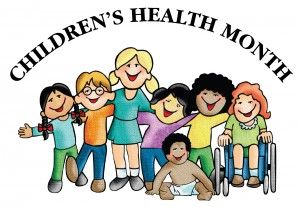Tuesday

Do It for the Children
The number one friend of big government: The Crisis. When there's a crisis, the government says it needs more power in order to deal with it, and then it scarcely ratchets its newly-acquired power back down after the crisis is over. Big government's second best friend: the children (pronounced, "The chiiiiiildreeeeeeen!"). We authorize government to do all sorts of things for the sake of the children, blithely unaware that, every time we do, we also authorize them to do things to the children.
More disturbing, we're ignorant of the fact that it's the parents' job to do things for the children and that, to the extent the government helps the chiiiiiiildreeeeeen, family ties are further weakened and parents become more irresponsible, thereby increasing the call for more government intervention. And the downward spiral continues at an accelerated pace. This story that came out yesterday is a great example of it: Higher taxes are better for children.
I won't address the merits of the study or even the merits of the blurb-like article (you notice the states that scored lowest are mostly states that score lowest on all similar tests?). I'm willing to concede for argument's sake that the study is accurate and article's conclusion is proper. It doesn't change the fact that, to the extent the government steps in, the family steps out. To the extent the family steps out, the need for government increases. Eventually, the social fabric is entirely tattered.
Well, the social fabric has already been tattered, but at this pace (free school lunches for everybody, no child left behind, etc.), our remaining rags are being shredded as well.
Ironic Sidelight: As our country's adults increasingly don't "do It" for the children, the greater becomes our society's needs to do it for the children. It's not a coincidence.
Super Bowl Economics
"ConvergEx's annual analysis of Super Bowl economics shows that, when the time and place is right, prices can soar like a Hail Mary pass to clinch the playoffs. Yes, the face value for tickets is unchanged in the last year - $800 to $1,200. But the street price for a ticket to the big game will set you back at least $2,000, and the average ticket is running closer to $4,000. The good news, sort of, is that there has been no inflation for the “Cheapest” seats since last year, when they were also two grand. And that is despite a smaller stadium this time around (68,000 versus +80,000). . . Nic Colas goes to note that to get into Super Bowl #1 would have cost you all of $12. That was in Los Angeles in 1967. And the best seat in the house. From there, stated ticket prices went to $50 in 1984, $100 in 1988 and $500 in 2003. Now, the prices printed on the ticket for the Indianapolis game this Sunday are between $800 and $1,200. . . . [T]his is an inflation rate of around 8,900% for the period, versus 687% for the Consumer Price Index." Link.
